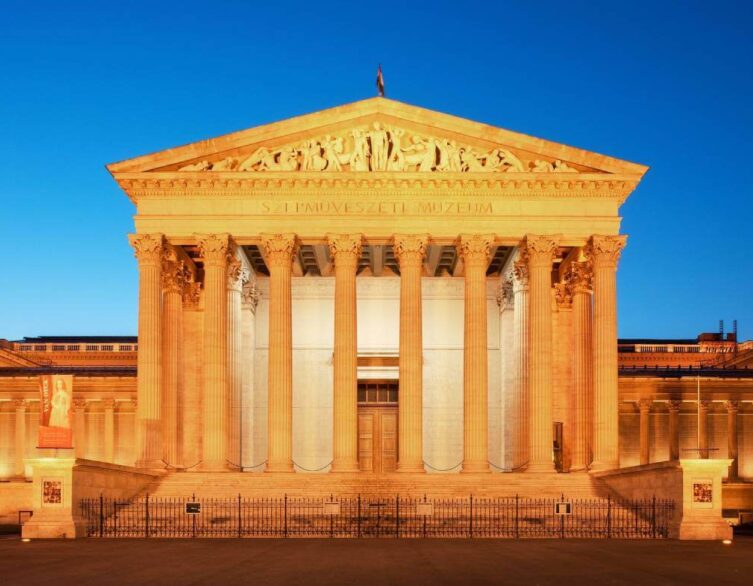Guardians of Eternity: China’s Terracotta Warriors Come to Budapest

One of the world’s most extraordinary archaeological treasures arrives in Budapest this winter. The Museum of Fine Arts presents Guardians of Eternity, a spectacular exhibition featuring the legendary terracotta warriors of China’s first emperor. From November 28, 2025, through May 25, 2026, visitors can witness ten original terracotta soldiers alongside more than 150 ancient artifacts spanning over a millennium of Chinese history.
This once-in-a-lifetime exhibition brings the mysteries of ancient China to the heart of Europe. Standing face-to-face with these life-sized clay warriors—each one individually crafted over 2,000 years ago—offers a profound connection to one of history’s most ambitious rulers and his quest for immortality.
Exhibition Details at a Glance
- Location: Museum of Fine Arts, Ground Floor, Temporary Exhibition Space
- Dates: November 28, 2025 – May 25, 2026
- Featured artifacts: Over 150 ancient objects from Shaanxi Province museums
- Highlights: Ten original terracotta warriors from the First Emperor’s tomb
- Period covered: 8th century BC to 3rd century AD
- Partner institutions: Shaanxi Cultural Heritage Promotion Centre and Emperor Qinshihuang’s Mausoleum Site Museum
The Story Behind the Warriors
In 1974, farmers digging a well near Xi’an, China, made one of the greatest archaeological discoveries of the 20th century. Buried beneath the earth lay thousands of life-sized terracotta soldiers, each with unique facial features, hairstyles, and expressions. These warriors had been guarding the tomb of Qin Shi Huangdi, China’s first emperor, for more than 2,200 years.
The young ruler ascended to the throne at just thirteen years old during the turbulent 3rd century BC, when seven rival kingdoms fought for control of ancient China. Through military conquest and political strategy, he united these warring states into a single empire, establishing the Qin Dynasty and laying the foundation for imperial China that would last over two millennia.
What Makes This Exhibition Special
The Budapest exhibition goes beyond simply displaying the famous terracotta army. You’ll journey through centuries of Chinese history, exploring the rise of the Qin state and the consolidation of imperial power under the subsequent Han Dynasty. The artifacts reveal daily life in ancient China, from ceremonial objects and weapons to the intricate chariots designed to carry the emperor into the afterlife.
Each terracotta warrior was individually sculpted by skilled craftsmen, making no two figures identical. The exhibition showcases the remarkable detail in their armor, clothing, and facial expressions, offering insight into the structure and hierarchy of the emperor’s actual army.
The Emperor’s Quest for Immortality
Qin Shi Huangdi’s obsession with achieving eternal life drove him to create a tomb complex the size of a small city. Over 33 years, hundreds of thousands of workers constructed this underground empire, which includes a miniature replica of his entire kingdom. While the central burial chamber remains unopened, excavations over the past 50 years have revealed multiple burial pits filled with thousands of terracotta figures.
Best deals of Budapest
The exhibition features beautiful artifacts connected to the emperor’s pursuit of immortality, including ceremonial chariots meant to transport him to the afterlife. These objects reflect both the spiritual beliefs and the extraordinary craftsmanship of ancient China.
Beyond the Qin Dynasty
The exhibition’s final section explores the Western Han Dynasty that followed, represented by treasures from the Yangling Mausoleum dating to the mid-2nd century BC. Objects from Emperor Jing’s tomb tell the story of Western conquests and China’s integration into Silk Road trade networks. You’ll see ancient coins, measurement tools, and economic artifacts that reveal how this vast empire functioned on a daily basis.
Planning Your Visit
The Museum of Fine Arts sits on Heroes’ Square, one of Budapest’s most iconic locations. The square is easily accessible via Metro Line 1 (yellow line), which stops directly at Hősök tere station. Multiple bus and trolleybus lines also serve the area.
Allow at least two hours to fully appreciate the exhibition and read the detailed information accompanying each artifact. The museum offers audio guides in multiple languages, which provide valuable context about the objects and their historical significance.
Consider visiting on weekday mornings for a quieter experience, as weekends and holidays tend to draw larger crowds. The exhibition runs through late May, giving you flexibility to plan your visit during different seasons—whether you prefer the crisp winter atmosphere or the blooming spring weather in Budapest’s City Park, located just behind the museum.
Why This Matters for Your Budapest Visit
Major exhibitions of this caliber rarely come to Central Europe. The collaboration between the Museum of Fine Arts and Shaanxi Province’s cultural institutions represents years of planning and international cooperation. After Budapest, these precious artifacts will return to China, making this a truly limited opportunity.
The exhibition complements Budapest’s rich museum landscape while offering something entirely different from the city’s Hungarian and European collections. Whether you’re a history enthusiast, art lover, or simply curious about ancient civilizations, the terracotta warriors provide a fascinating window into a culture that shaped much of Asia.
Related attractions
Related news



















